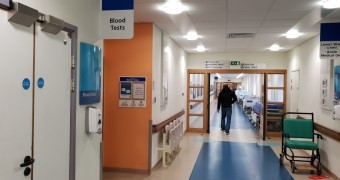Table of contents
What should tenants be aware of when nearing the end of a commercial lease?
Every commercial lease comes to an end eventually. It could be that the term expires, and as the tenant, you wish to move on. Alternatively, the end could be more abrupt if you or the landlord exercise your right to end the lease early. Whatever the timing, there are several things to think about before your commercial lease comes to an end. Here are the factors you should consider to make sure your ready for the process ahead.
Get the right advice
If your commercial lease is coming to an end and you’re unsure of the legal and financial obligations it may bring, please get in touch with our team. At Eddisons, we understand every aspect of commercial lease agreements and can provide confidential guidance to help you end your lease in the right way.
1) CHECK WHETHER YOU HAVE THE RIGHT TO STAY
Depending on the type of agreement you have signed, you may have permission to stay after the end date of your lease. A Protected Lease gives you protection under the Landlord and Tenants Act 1954 and ensures that, with the agreement of your landlord, you can stay until either party decides to break the lease.
In this case, at the expiry of the lease, the tenancy continues on the same terms until either party serves notice to end it. A reasonable notice period to break the lease is typically six to eight months, which should give you plenty of time to consider your options.
On the other hand, if you have an Excluded Lease, you are not protected by the 1954 Act and do not have permission to stay after the lease’s end date. In this case, any renewal will be subject to fresh negotiations between you and the landlord at the end of the lease.
2. UNDERSTAND YOUR BREAK OPTIONS
Break clauses are commonly included in commercial leases to allow both parties to end the lease on a particular date. If you want to end the lease using a break clause, carefully check everything you need to do to make your break legal. If you don’t adhere to the terms of the lease to the letter, your break notice may be invalid and you could still be liable for paying rent, VAT and service charges even after you have vacated the premises.
Your lease may also advise you that you must give vacant possession by the break date, which means the property must be empty and free of people. In reality, this can be difficult to do, particularly if you’ve sublet your commercial premises or wish to pass the lease on to someone else. In either case, you should discuss your situation with the landlord and seek professional advice.
3. ASK WHETHER YOU CAN SURRENDER YOUR LEASE
The other way to end your commercial lease early is to ask the landlord if you can surrender the lease. Your landlord is under no obligation to grant or even consider this request. They’re only likely to agree if they want to redevelop the premises or find a new tenant who’ll pay a higher rent.
If you want to explore this option, put it in writing and seek clarity over the terms of the surrender, such as whether you’ll have to pay to be released from the lease and if you’ll be liable for the cost of repairs.
4. CONSIDER YOUR COVENANTS
The lease covenants outline the obligations of one party to another. As the tenant, there are several obligations you’re likely to have. For example, a commercial lease will usually require you to repair and reinstate the property to the condition you found it in. It will be your responsibility to do so before your lease expires as you will have no legal right to return to the property once it has.
This will require considerable planning, with a timescale outline and a budget put aside. If you’ve made alterations to the property, you’ll usually have to remove them so the landlord can offer a blank canvas to their next tenant.
For the process to go smoothly, you should communicate with your landlord and start the negotiations early. That will help you meet your obligations and reduce the risk of costly litigation.
5. UNDERSTAND YOUR REPAIR OBLIGATIONS
Most leases also include a ‘Full Repairing and Insurance’ (FRI) clause that makes it your responsibility to return the premises to your landlord in good condition. Towards the end of the lease, a landlord will typically serve you with a Schedule of Dilapidations, which will outline the work they want you to do.
You should compare the Schedule of Dilapidations you receive from the landlord with the Schedule of Condition that we advise tenants to draw up at the start of a lease. This will remove any uncertainty about your repair requirements and ensure you only make the repairs you’re legally responsible for.
Experts in commercial property
Contact our team of leading auctioneers, property agents, and RICS-qualified surveyors today.
















